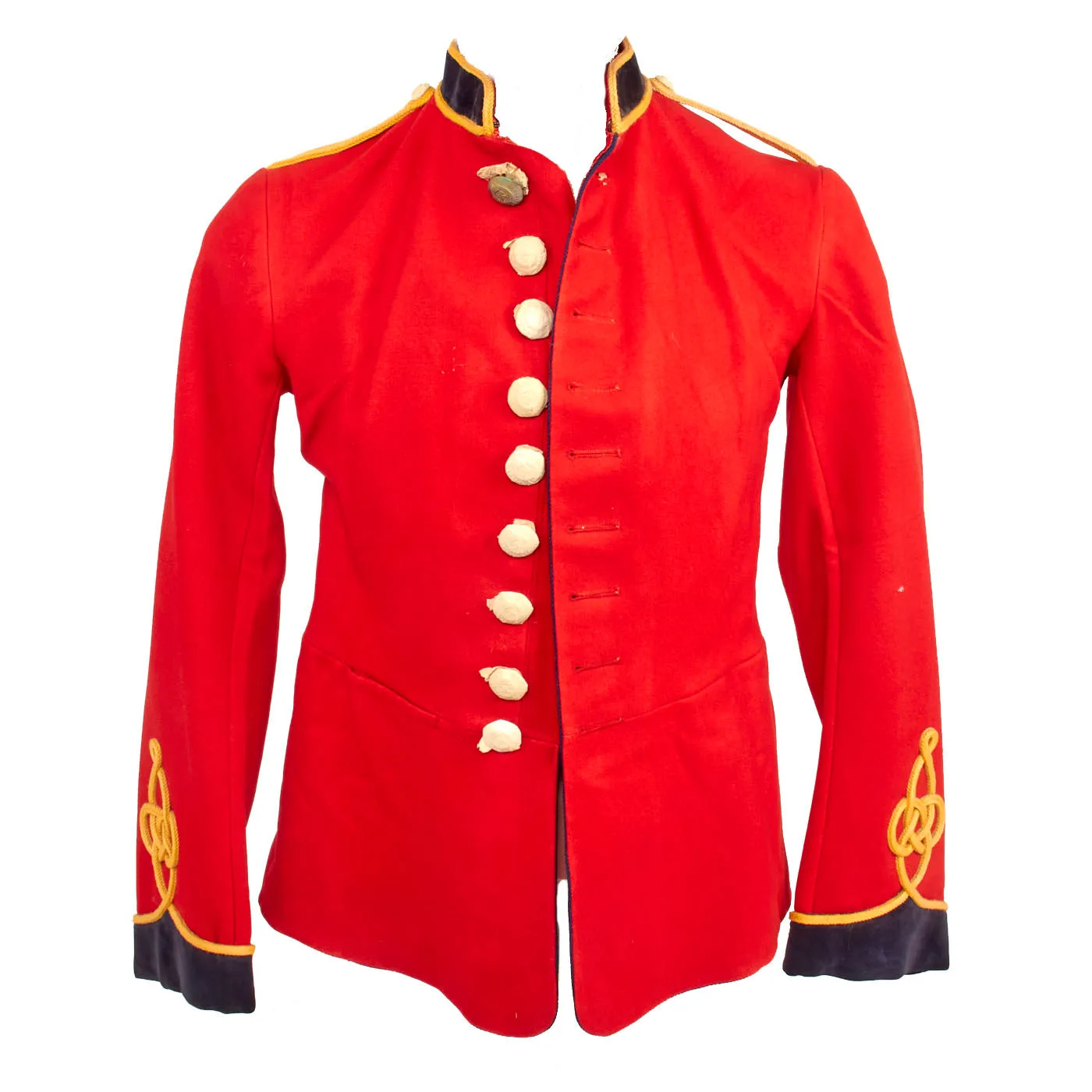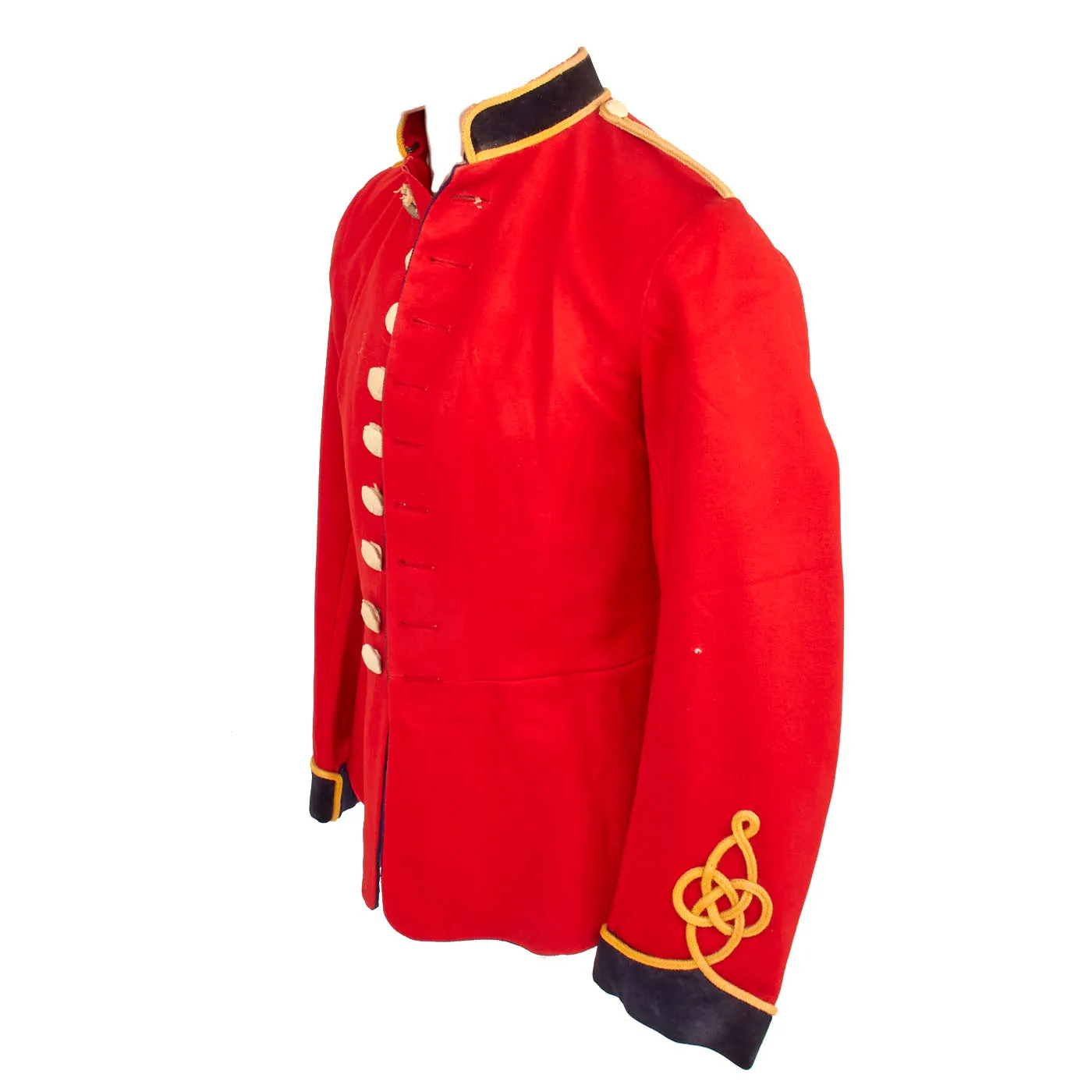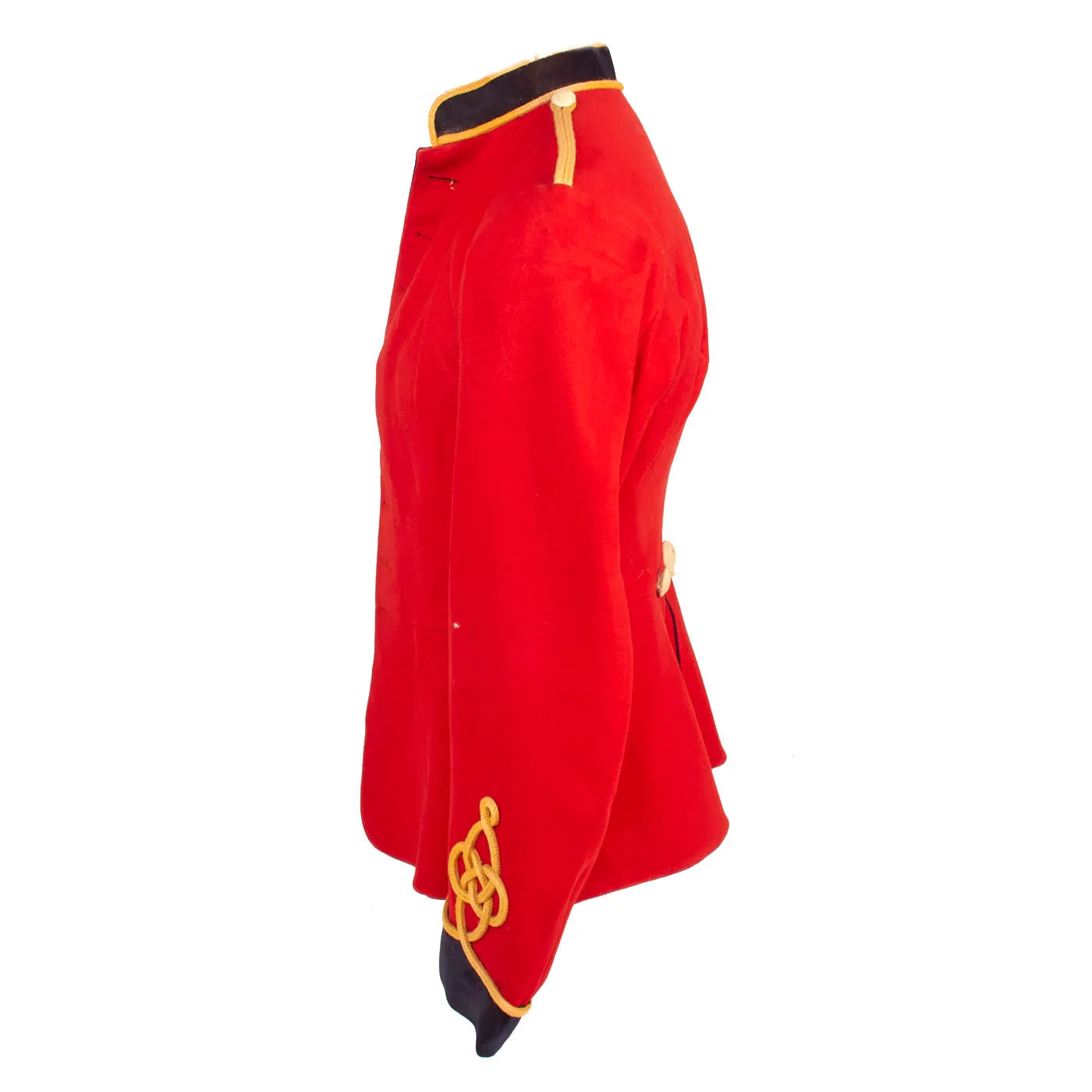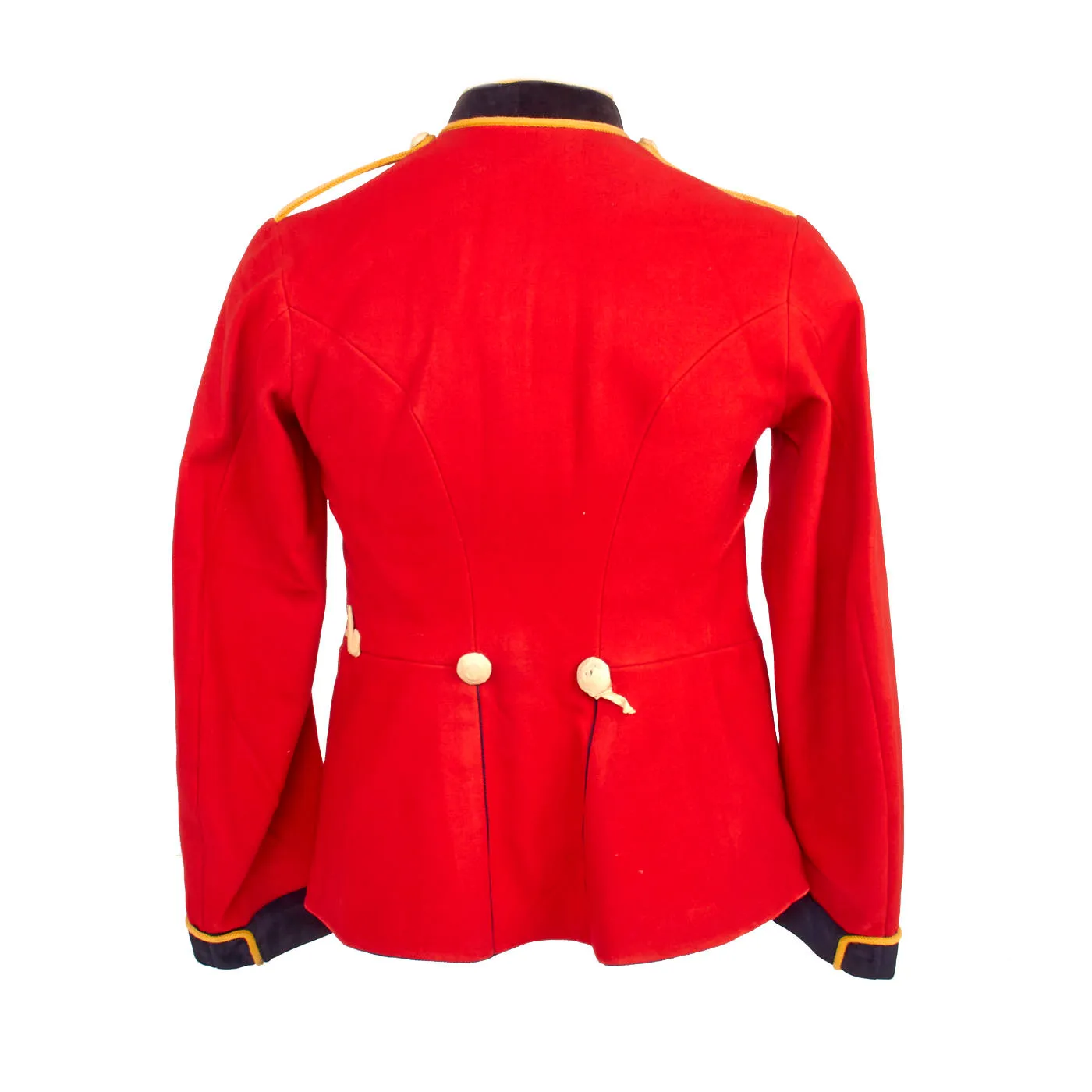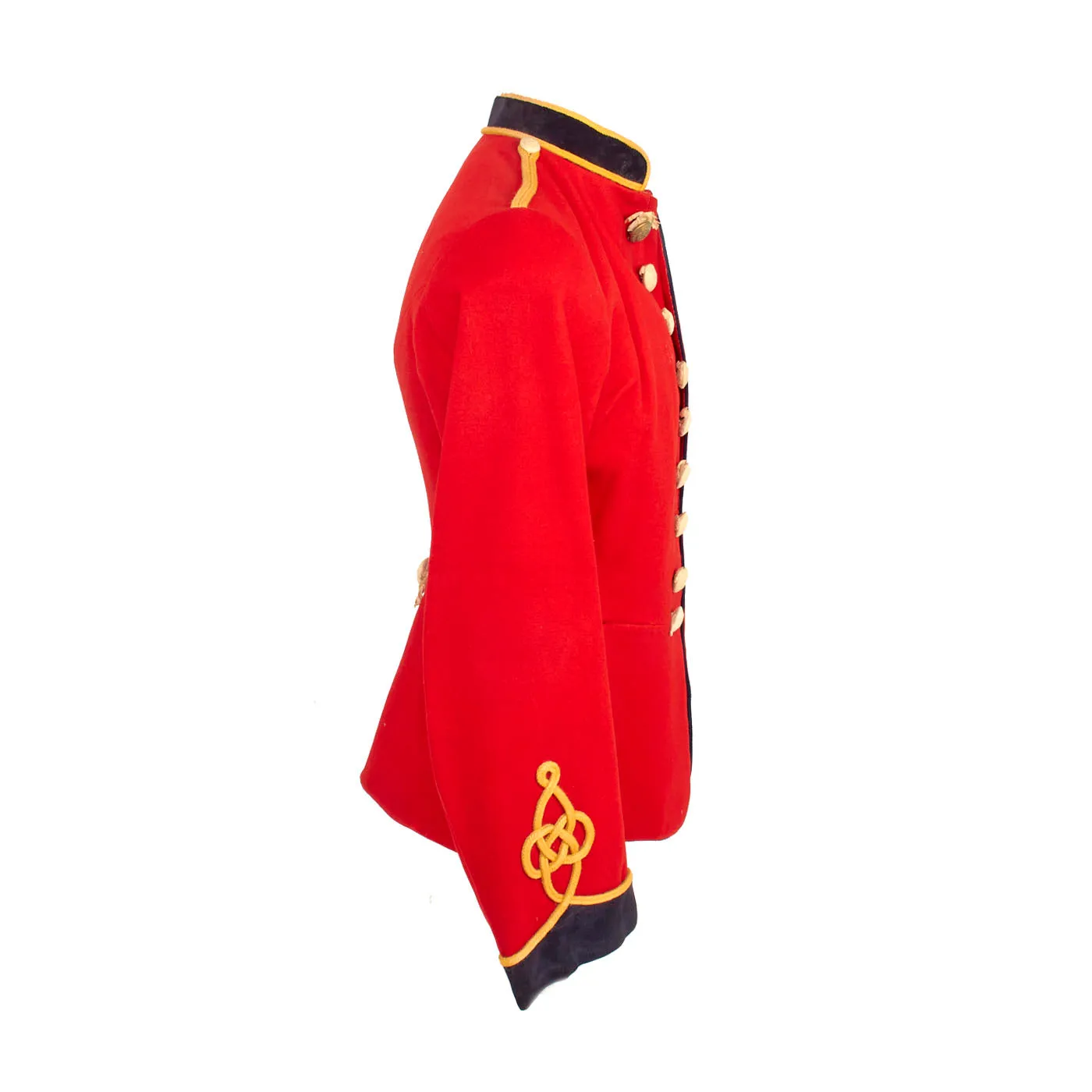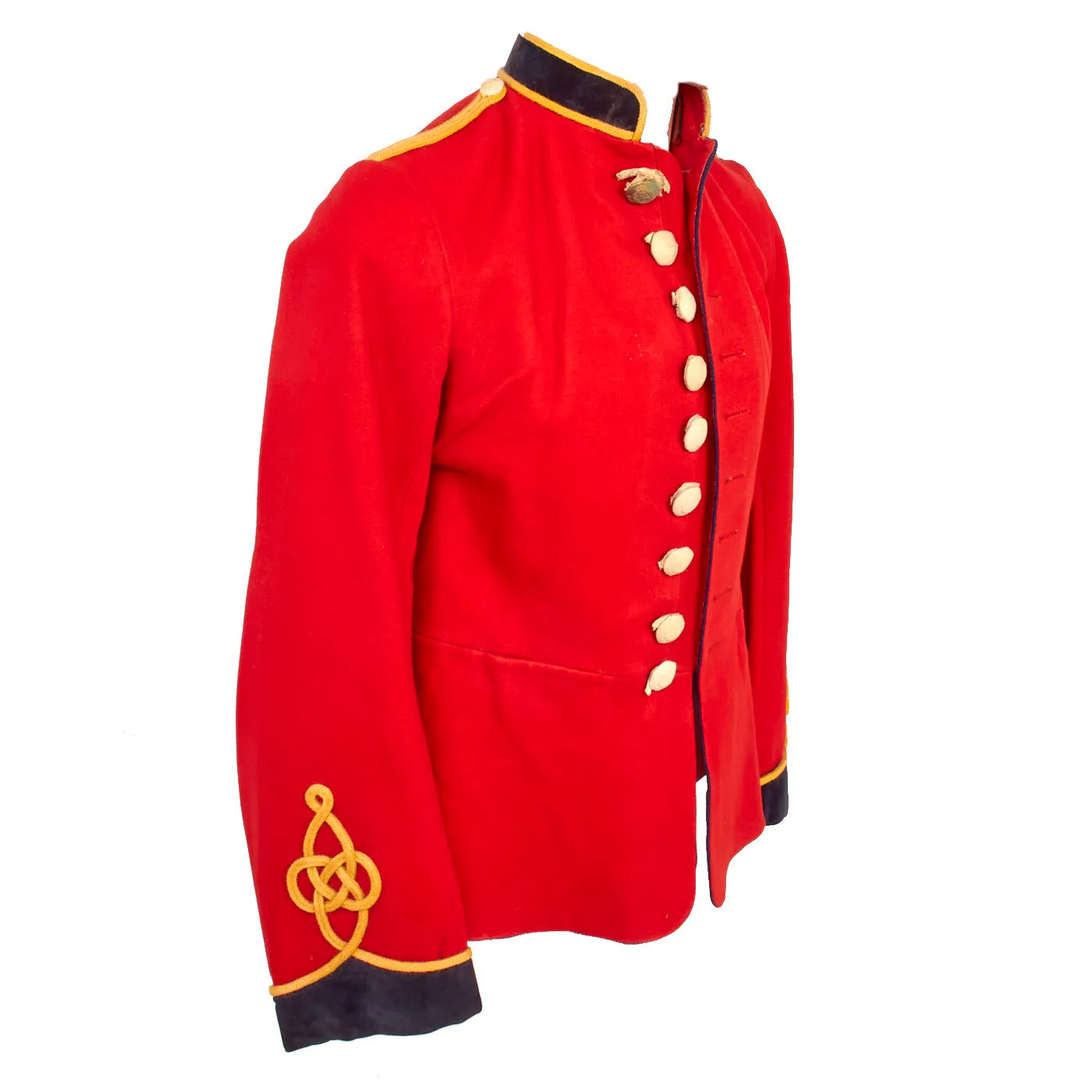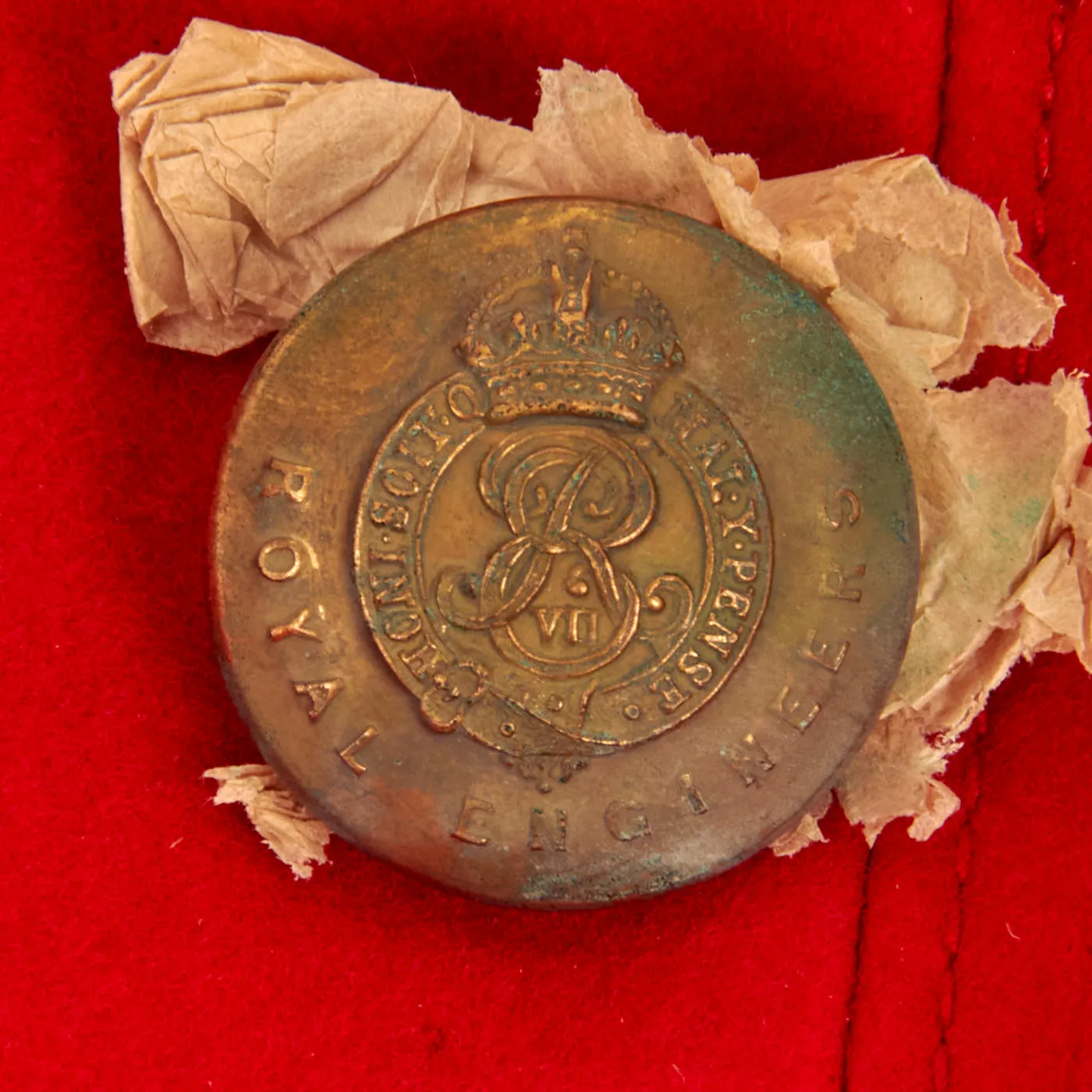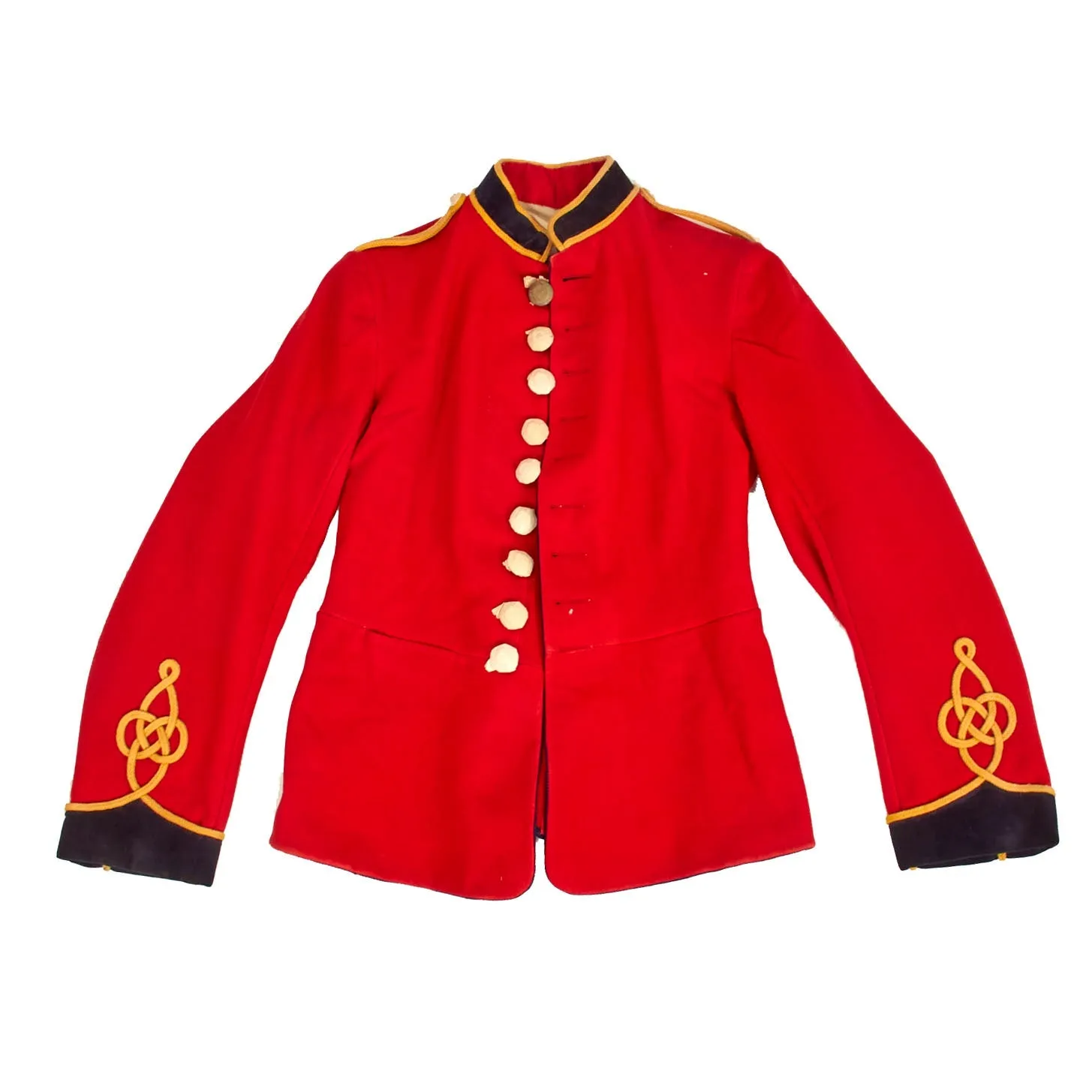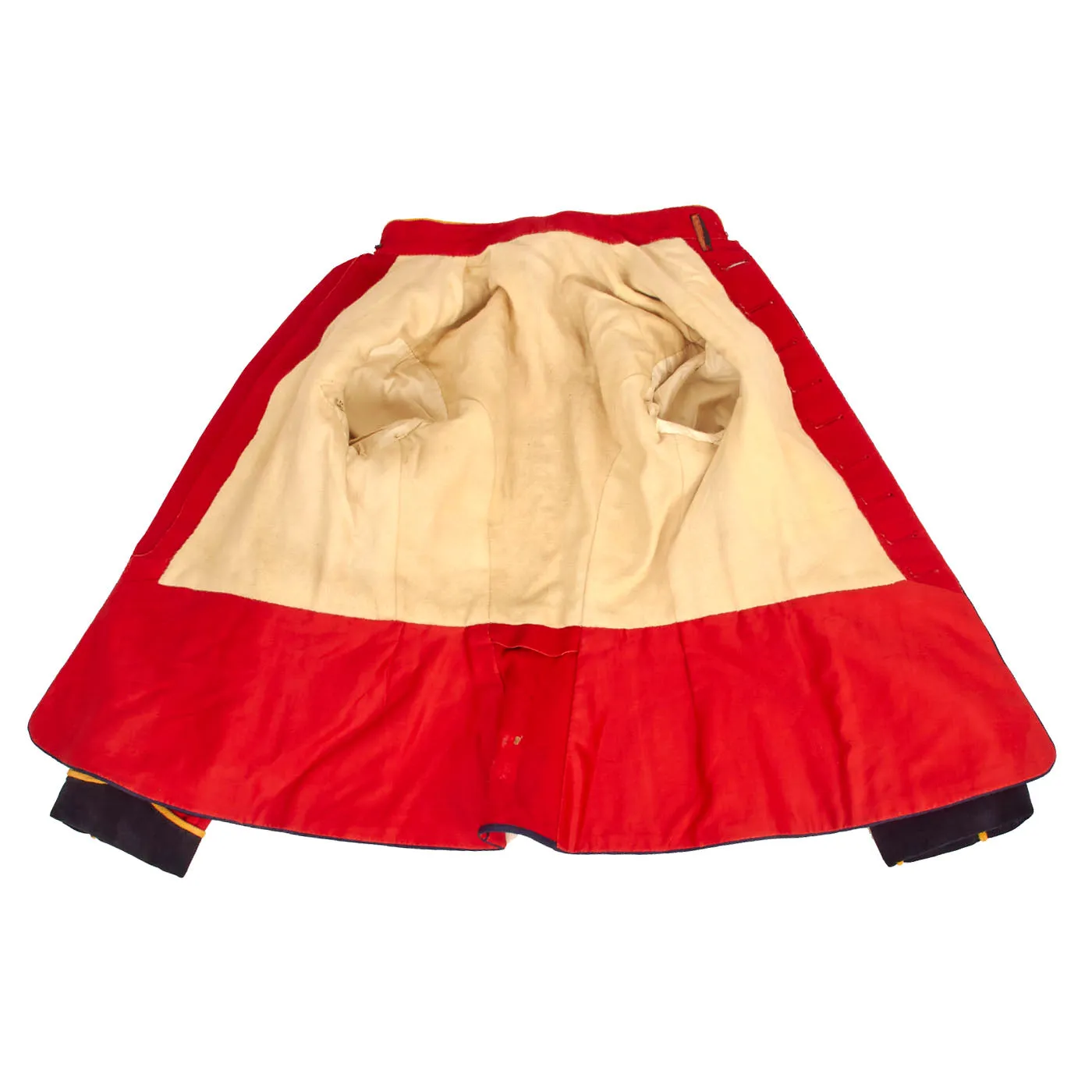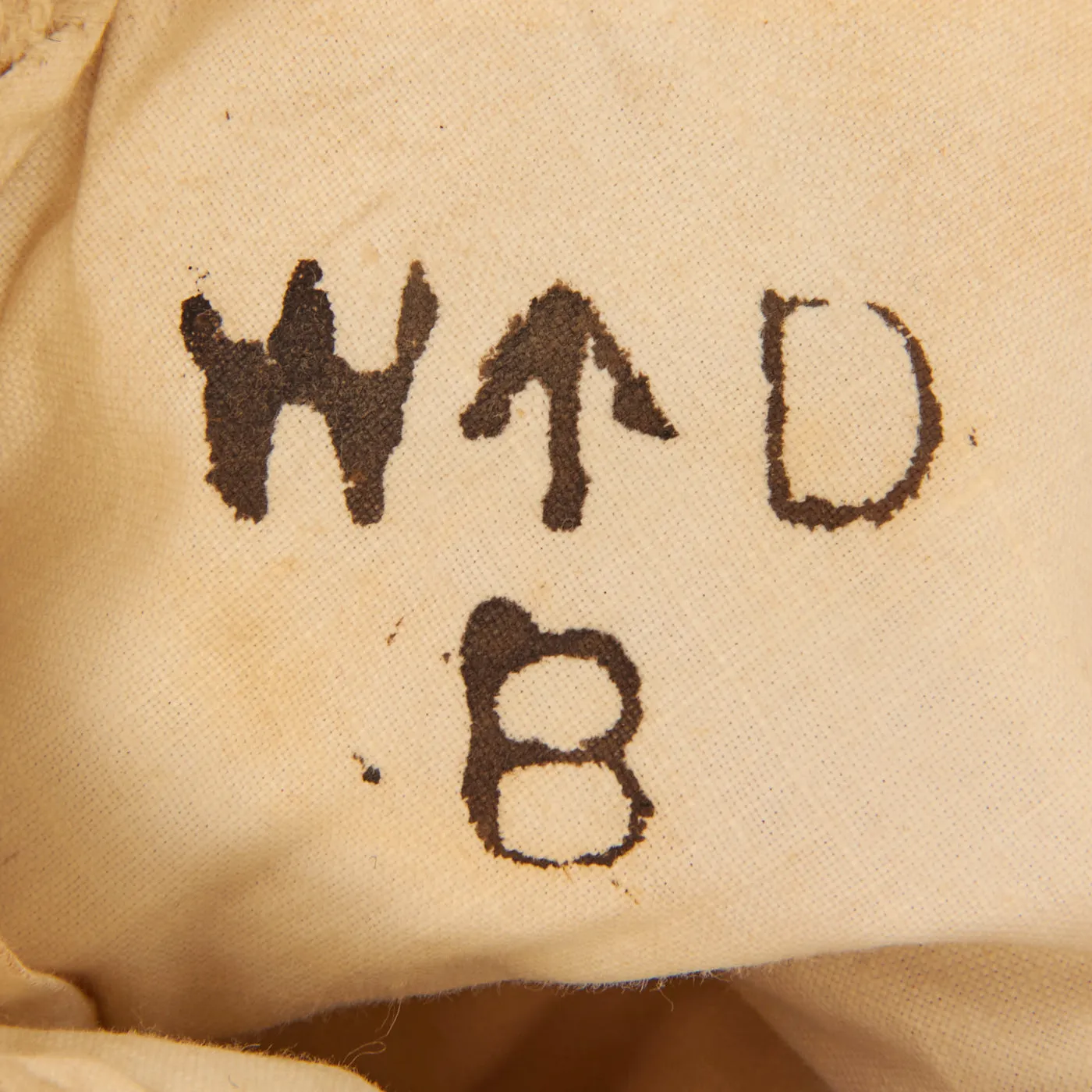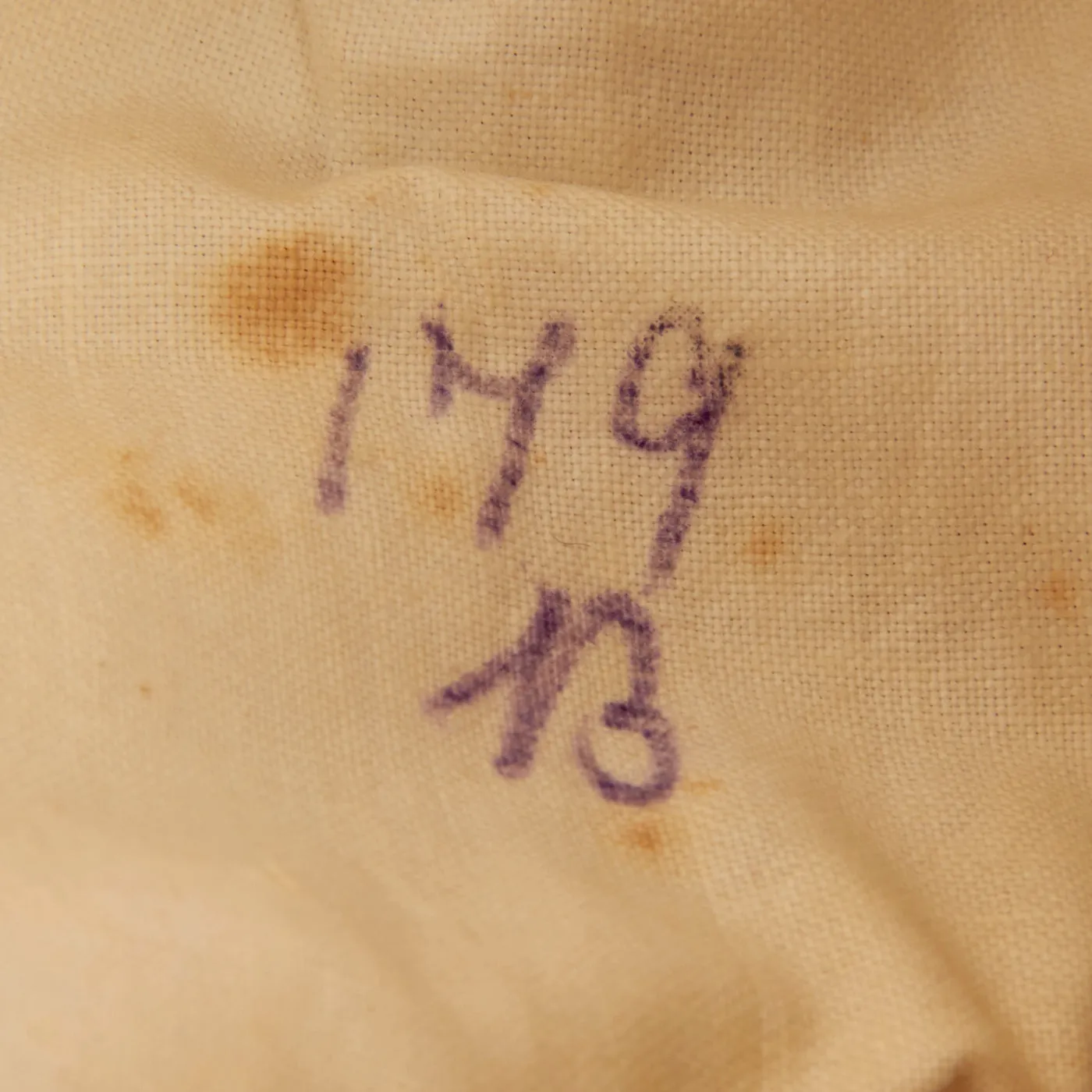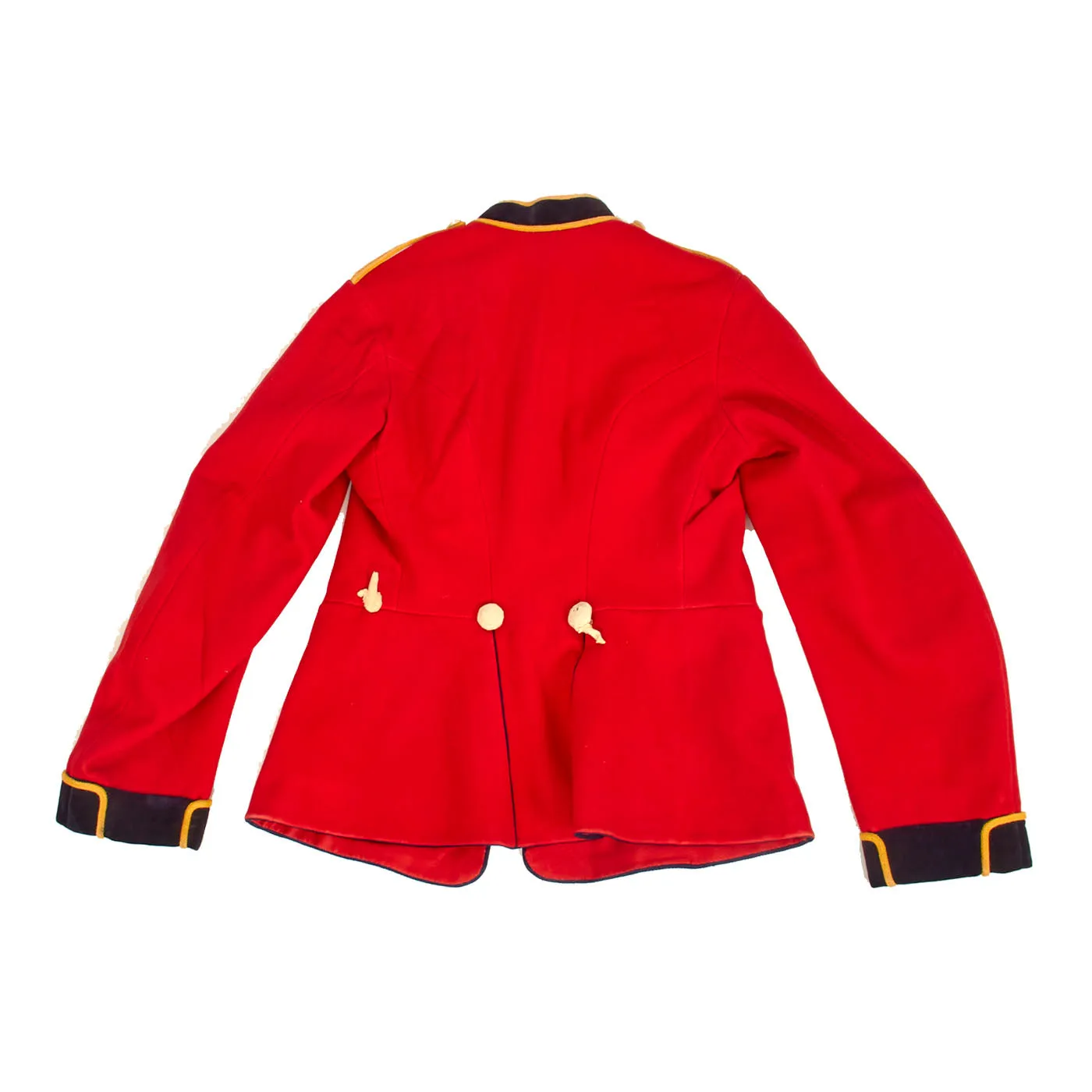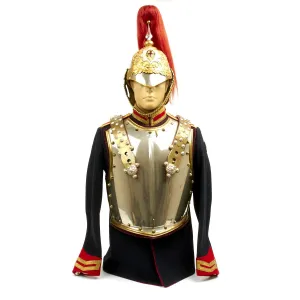Original Item: Only One Available. The Corps of Royal Engineers has a long heritage that not many corps can rival. They were the direct descent from William the Conqueror's Military Engineers who were directed in 1066 by Humphrey de Tilleaul.
By the end of the Peninsular War in 1814 there were five companies serving with Wellington's Army.
In 1856, the Corps of Royal Sappers and Miners were amalgamated with the Corps of Royal Engineers. The rank of 'Private' in the newly formed Corps of Royal Engineers was changed to 'Sapper' and still exists today.
This is an original unissued Royal Engineers WWI era scarlet tunic constructed of serge wool, with an off white polished cotton lining. The original paper label is almost completely missing. The top button was uncovered from the paper cover to be able to fully identify the unit in which the tunic was intended for. This tunic appears as if it has been in storage since WWI.
A fantastic example that would be incredibly hard to upgrade. Unissued specimens, especially enlisted, are seldom found from this time period!
Approx. Measurements:
Collar to shoulder: 8”
Shoulder to sleeve: 24”
Shoulder to shoulder: 16”
Chest width: 16”
Waist width: 14”
Hip width: 17”
Front length: 27"
WW1, Royal Engineer tunneling companies, nicknamed "the Moles", were specialist units of the Corps of Royal Engineers within the British Army, formed to dig attacking tunnels under enemy lines during the First World War. They designed and built the frontline fortifications, creating cover for the infantry and positions for the artillery. It was in the hands of the technically skilled RE's to develop responses to chemical and underground warfare.
The RE's maintained the railways, roads, water supply, bridges and transport - allowing supplies to the armies. They operated the railways and inland waterways, maintained wireless, telephones and other signaling equipment, making sure communications existed. The Royal Engineers grew into a large and complex organization, by the 1 August 1914, the RE consisted of 1056 officers and 10394 men of the regular army and Special Reserve, plus another 513 and 13127 respectively serving with the RE of the Territorial Force. The officers and men manned 26 coastal defense Fortress Companies (of which 15 were overseas), 7 Signal Companies, 2 Cable and Airline (signaling) Companies, 15 Field Companies, 3 Survey Companies, 2 Railway Companies, and miscellaneous other units. There were also 9 Depot companies carrying out training and administrative duties, as well as various Schools.
In 1915, in response to German mining of British trenches under the then static siege conditions of World War One, the corps formed its own tunneling companies. Manned by experienced coal miners from across the country, they operated with great success until 1917, when after the fixed positions broke, they built deep dugouts such as the Vampire dugout to protect troops from heavy shelling. By 1 August 1917, it had grown to a total of 295668. It was twelve times bigger than the peacetime establishment.




